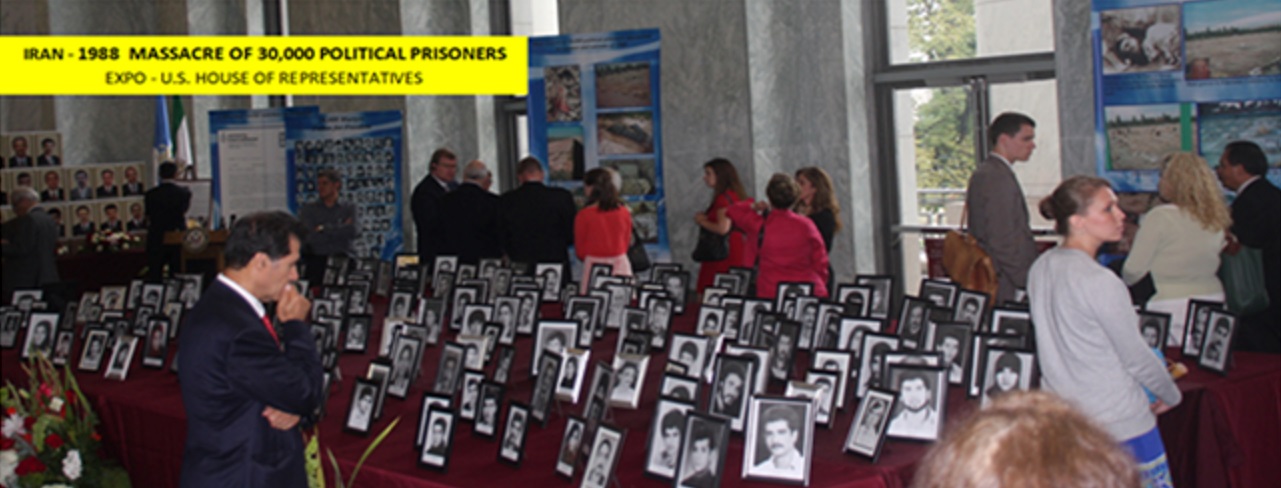HUFFPOST
06/08/2017 – Dr. Majid Rafizadeh
HUFFPOST – A resolution was recently introduced in the U.S. House of Representatives, condemning an atrocity that most Americans, and indeed most westerners, have never heard of: the 1988 killings of approximately 30,000 political prisoners in Iran.
Lawmakers led by Congressman Michael McCaul (R-TX), Ed Royce (R-CA), Eliot Engel (D-NY), and Pete Sessions (R-TX), and 42 of their colleagues from both sides of the aisle, chose to try to right that wrong, introducing legislation, H. Res. 188, deploring the murder of victims who “included thousands of people, including teenagers and pregnant women, imprisoned merely for participating in peaceful street protests and for possessing political reading material, many of whom had already served or were currently serving prison sentences.”
The cruelty was extreme as the resolution noted, “the families of the executed were denied information about their loved ones and were prohibited from mourning them in public”. But the outside world was kept pretty much in the dark. Or, when confronted with flashes of reality, many chose to close their eyes.
According to Amnesty International, the vast majority of the executed were affiliated with the main opposition People’s Mojahehin of Iran (PMOI/MEK). Prisoners were “brought before the commissions and briefly questioned about their political affiliation, and any prisoner who refused to renounce his or her affiliation with groups perceived as enemies by the regime was then taken away for execution,” the House resolution noted. The lawmakers were incensed to act in part by the audacity of the government of recently re-elected president Hassan Rouhani, who appointed as his Justice Minister one of the detested members of Tehran’s “death commission,” Mostafa Pourmohammadi. Many argue that like most instances of brutal carnage by autocratic, dictatorial or theocratic governments, the massacre was carried out in such a way that word of the executions spread to all corners of the country, terrorizing the populace and paralyzing thousands of families, neighborhoods, and communities with grief.
Many believe that what is even more galling is that the Supreme Leader Ali Khamenei’s pick to succeed Rouhani in last month’s presidential elections, Ebrahimi Raisi, had already been rewarded for his long years of allegiance by being named custodian of the Astan Buds Razavi foundation, the wealthiest charity in the Muslim world. Charity here is a relative term. In Iran under the mullahs and ruling clerics, it is believed that that the mega-millions all end up in the coffers of Iran’s Supreme Leader, to fund the Islamic Revolutionary Guards Corps and its fundamentalist agenda. Some argue that now Khamenei sought to manipulate the election, and thereby shore up his political establishment, by imposing Raisi on Iran’s unwilling people as their president. He most likely did not calculate that the campaign rivalry between the self-described “moderate” incumbent and his “hardliner” rival would bring the 1988 massacre to the surface, prompting public outrage so extreme that even powerful mullahs within Khamenei’s faction distained to support Raisi. Khamenei more likely backed down, which appears to be a big loss for him, but not a big change in the outcome for Iran’s people. In addition, many believe that Rouhani, also a veteran of this political establishment of the Islamic Republic, got another term likely to differ little from his first four years, which witnessed according to Amnesty International thousands of executions, an intense crackdown, rampant poverty and domestic injustice; parallel to escalating foreign meddling, skyrocketing military/security budgets, and the drive to advance the ballistic missile project. It was, however, another awakening to the ruling clerics of how past crimes against humanity can come back to haunt. In light of how deeply Iran’s nation reacted to this re-emergence of the 1988 massacre, more likely overturning efforts at the highest level to engineer the “election,” H. RES. 188 “Condemning the Government of the Islamic Republic of Iran for the 1988 massacre of political prisoners and calling for justice for the victims” is timely and righteous.
According to Amnesty International, the authorities have begun desecrating the unmarked mass graves of those executed in different cities including in Mashhad northeast Iran and in Ahwaz in the south of the country, fearful of the spread of the call for justice campaign regarding the victims of the 1988 massacre,
Bottom of Form
In a statement issued on June 1, 2017, Amnesty International expressed alarm: “The desecration of a mass grave site in Ahvaz, southern Iran that contains the remains of at least 44 people who were extrajudicially executed would destroy vital forensic evidence and scupper opportunities for justice for the mass prisoner killings that took place across the country in 1988, said Amnesty International and Justice for Iran,” it wrote.
The legislators cited in their resolution a report from Amnesty International, concluding “there should be no impunity for human rights violations, no matter where or when they took place. The 1988 executions should be subject to an independent impartial investigation, and all those responsible should be brought to justice, and receive appropriate penalties.”
I second that.

